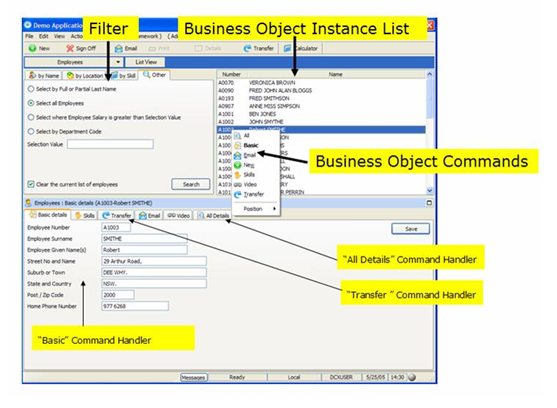OBJECT-ACTION User Interfaces
System i and Windows applications, including the Framework, share the same basic design for user interaction: Object-Action interfaces.
In these interfaces the user first selects and object and then the action to be performed on the object, as opposed to Action-Object interfaces (such as command line applications) where the command is specified first and its target object second.
Because of this fundamental similarity, System i applications fit naturally in the Framework model:
The navigation screens of a System i application are replaced by graphical elements in the Framework, such filters and instance lists, which the user can use to quickly locate the object they want to work with.
The options and associated screens in a typical Work with screen become a set of command tabs.
In the Framework the Object-Action model is expressed as a powerful graphical user interface (GUI).
System i and Framework Applications Share the Basic Model
The basic Framework concepts of business objects, filters and command handlers (screens) can be visualized in a System i application like this:

Here you have a:
|
Filter |
Where the Work with... command provides you with options to filter the list of objects that are displayed. (Many "Work with xxxx" interfaces allow you to filter inside the main display as well). |
| Business Object Instance List |
The list of links that match your filter's search criteria. These links are your business objects. |
| Business Object Commands |
The Options such as 2=Edit, 7=Rename, 8=Display that you can execute against an individual business object. |
| Command Handlers |
The programs that execute when you execute a command (7=Rename or 8=Display attributes examples are shown). |
In the Framework, the same concepts are visualized as a graphical user interface (GUI) like this:
